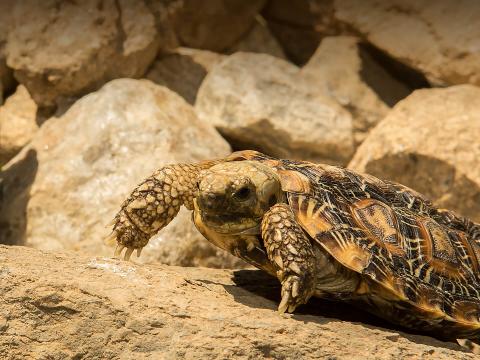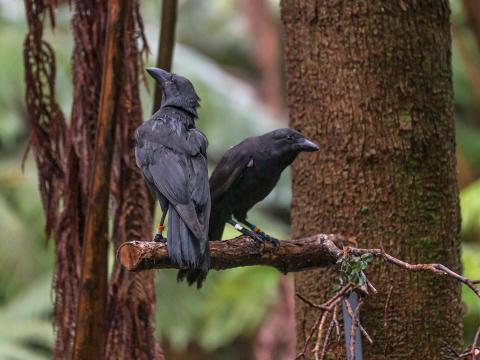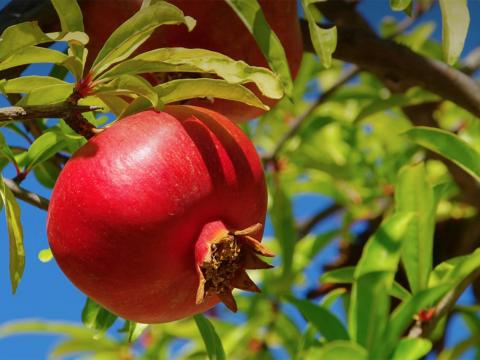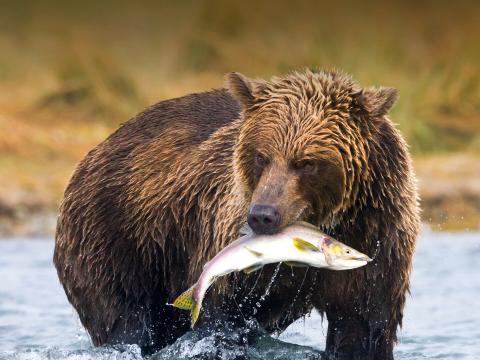Guanaco
- CLASS: Mammalia (Mammals)
- ORDER: Artiodactyla
- FAMILY: Camelidae
- GENUS: Lama
- SPECIES: guanicoe
ABOUT
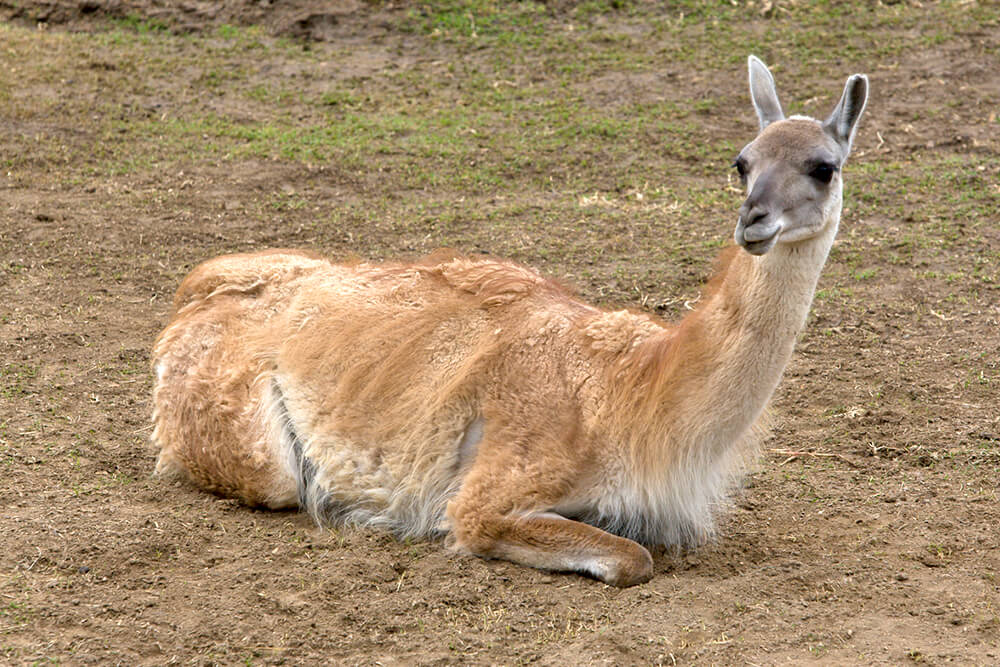
Cool critters: Graceful guanacos are related to camels. Pronounced "gwa NAH ko," they live throughout South America in dry, open country in the mountains or on the plains. Guanacos have a calm attitude, so people started to domesticate them for use as pack animals.

The result is the llama of today, which is the domesticated version of the guanaco—llamas don’t exist in the wilderness. Another branch of the family tree is the vicuña, a relative that has its own domesticated version—the alpaca.

Everyone knows what a llama looks like, but what are guanacos? Standing less than 4 feet (1.2 meters) tall at the shoulder, guanacos have a slender body, long legs, and a long neck. They are shorter and smaller than their camel relatives. Although they seem delicate, guanacos can weigh up to 265 pounds (120 kilograms). Male guanacos are larger than the females. All guanacos have a thick, wooly coat that can be light brown, brownish yellow, or a rusty red. Their belly, rump, and the backs of the legs are usually white; the head, ears, and nape of the neck are gray. These colors help guanacos blend in with their grassland and desert habitats.
Guanacos have large eyes with thick lashes to protect them from dust and dirt kicked up by heavy winds. Their ears are large and pointed. Though related to camels, they do not have any humps on their back. What they do share in common with camels are their feet. Two padded toes on each foot help with footing on rocky trails or gravel slopes. Their feet are best described as “squishy.”
Most guanacos live in herds. They run when threatened, and their best chance of escaping a predator, such as a mountain lion or fox, is to do it all together. If they run in a group, this may confuse the predator, making it harder to focus on any one individual.
Guanacos have many ways of getting around. In the open places where they live, there is no place to hide. But guanacos are excellent runners, reaching speeds of 40 miles (64 kilometers) per hour, just like horses. Their soft-soled hooves gain traction on the gravelly terrain. Baby guanacos, called chulengos or guanaquitos, are able to run soon after birth. Guanacos are also strong swimmers and are comfortable standing or lying in mountain streams. Whether walking, running, or swimming, guanacos are athletic.
All wildlife have many ways of communicating, although some ways are more pleasant than others. The guanaco starts out using the standard method of ears, body, and tail positions. When the ears are up, it means the guanaco is relaxed. Ears forward means the guanaco is alarmed, and ears laid flat signals aggression. A tail pointing down is normal, straight out is a sign of an alert guanaco, and straight up is an aggressive signal. A nose-to-nose encounter is a type of greeting, while slouching down indicates submission.
Guanacos also communicate through vocalizations. Their sounds range from high-pitched trills to snorting and shrieking. Their alarm call sounds like a cross between a bleat and a laugh.
Guanacos have other communication methods that some people might find gross. They can spit up to a distance of 6 feet (1.8 meters) and have great aim. What’s in their spit? Their stomach contents, made up of food that has been stewing in digestive juices. Food is not just for eating, as far as guanacos are concerned!
Guanacos also use their dung as a form of communication: dung piles mark territory boundaries for them. The next time you meet a guanaco, you'd better hope it has nice things to say to you!
HABITAT AND DIET
Guanacos are the largest herbivores in South America's dry areas. Their split upper lip acts like fingers to help draw in food. They are grazers and browsers and can eat some pretty tough, low-quality food. Not to worry, though—guanacos have a specialized digestive system to handle it. Their stomach has three chambers, and they are ruminants, like cows. This allows them to get the most nutrients from the plants they eat. Guanacos don’t need to drink any water and often don't drink during the day, getting all the moisture they need from the food they eat.
At the San Diego Zoo, the guanacos eat high-fiber pellets, Bermuda grass, and Sudan grass.
FAMILY LIFE
Guanacos may live in a family group that includes one adult male, several adult females, and youngsters less than one year of age. Young males kicked out of the herd by the dominant male when they reached sexual maturity often form bachelor herds. The young males stick together for protection and practice fighting skills through play fights. And some males remain by themselves. These guys tend to be mature males looking for females or a herd to take over so they can start their own families.
A male often picks a territory that has high-quality vegetation to help him attract the females. Intense sparring between males, involving biting, spitting, and pushing the opponent to his knees, ensures the gene pool stays diverse—winner takes all, for a time.
Females wait to become pregnant until environmental conditions seem right. They give birth every other year to a single calf during the summer months, which are December through February in South America. Mountain lions are the guanaco's main predator but can only carry off one or two young. For this reason, many females give birth at about the same time so the babies have a greater chance of survival.
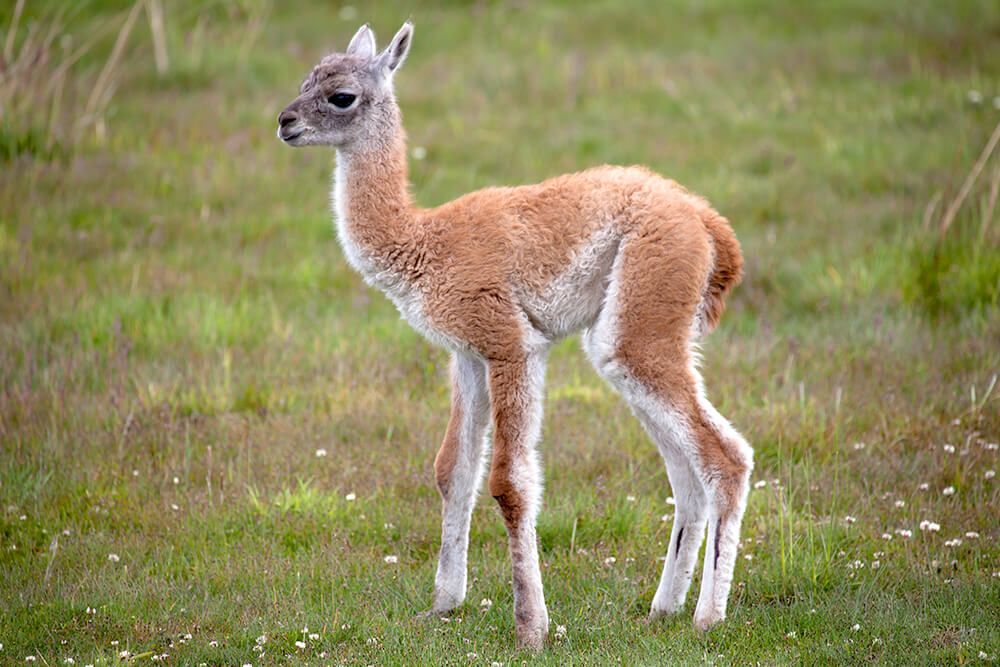
Newborns can stand five minutes after birth and begin to follow their mother immediately. They are weaned at 6 to 8 months and may be forced to leave the group at 11 to 15 months old. The young males join with other young bachelors; young females find other family groups to join.
It is a rough life for a baby guanaco, though. Predators, lack of food, bad weather, and accidents can mean death to the little ones. Only 30 percent of guanaco babies born in the wilderness live long enough to become adults.
CONSERVATION
There used to be about 50 million guanacos in the world. Today there are less than 600,000, with about 90 percent living in Argentina. Human activities resulting in habitat loss are the main threat to their survival. People consider them pests in parts of South America because they graze in certain regions where farmers keep their sheep.
By supporting San Diego Zoo Wildlife Alliance, you are our ally in saving and protecting wildlife worldwide.





